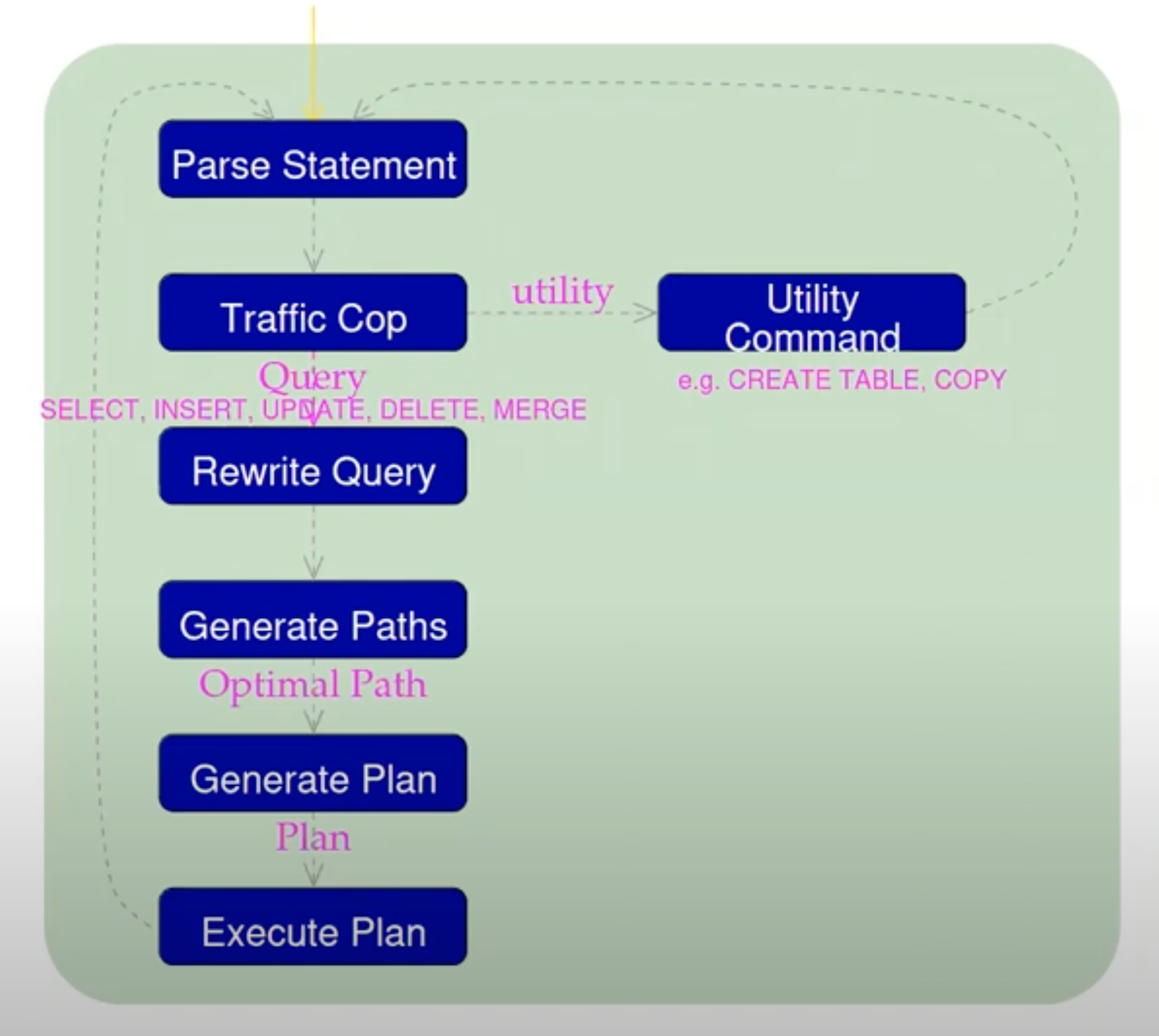Postgresql vs MySQL - Query Optimizer

The diagram shows the steps taken by PostgreSQL to optimize and execute a query, including parsing, query rewriting, generating paths, generating a plan, and executing that plan. The "Traffic Cop" and "Utility Command" are specific components in PostgreSQL's architecture that handle different types of SQL commands (e.g., SELECT, INSERT, UPDATE, DELETE, MERGE, and utility commands like CREATE TABLE).
PostgreSQL Query Optimizer Workflow
- Parse Statement: The query is parsed, and a tree structure is generated.
- Traffic Cop: Determines the type of command (regular query or utility command).
- Rewrite Query: The query might be rewritten for optimization purposes (e.g., rule-based rewrites).
- Generate Paths: Different potential execution paths for the query are generated.
- Generate Plan: The most optimal path is chosen, and a concrete execution plan is generated.
- Execute Plan: The plan is executed, and the results are returned.
MySQL Query Optimizer Workflow
MySQL also follows a similar process but with some differences in its optimizer's behavior and architecture:
- Parse and Preprocessing: The query is parsed, and various checks (like permissions) are performed.
- Query Optimization: The optimizer decides on the best execution plan. This involves selecting indexes, join types, and the order of operations. MySQL's optimizer uses both rule-based and cost-based approaches.
- Query Execution: The plan is executed, and the results are returned.
Key Differences Between PostgreSQL and MySQL Optimizers:
-
Rewrite Phase:
- PostgreSQL has a dedicated rewrite phase where it can apply rules to modify the query before optimization.
- MySQL generally does not have a separate rewrite phase but may rewrite certain queries internally during optimization.
-
Optimizer Hints:
- MySQL allows more extensive use of optimizer hints that users can provide to influence the optimizer's decisions (e.g., forcing the use of specific indexes, join orders).
- PostgreSQL has a limited set of optimizer hints, relying more on its cost-based decisions.
-
Planner/Executor Separation:
- PostgreSQL has a clear separation between the planning and execution phases, where the planner generates multiple potential plans and the executor runs the chosen plan.
- MySQL tightly couples the planning and execution, which can lead to some differences in how plans are adapted during execution.
-
Utility Commands:
- PostgreSQL handles utility commands separately from regular queries, as seen in the diagram you provided.
- MySQL integrates utility commands more closely within its command processing pipeline.
-
Cost Model:
- Both systems use a cost-based model, but they differ in how they estimate costs. PostgreSQL has a more granular cost model that considers factors like disk I/O, CPU usage, and network latency, while MySQL tends to be simpler in its cost estimations.
-
Support for Advanced Features:
- PostgreSQL often supports more advanced optimization techniques and features like table partitioning, which can affect the optimizer's decisions.
- MySQL has been improving its optimizer but traditionally has fewer advanced features than PostgreSQL.
In summary, while both PostgreSQL and MySQL have similar high-level goals in their query optimizers, they differ in their specific architectures, strategies, and the level of control they offer to the user over the optimization process. PostgreSQL is generally considered to have a more sophisticated optimizer, particularly in complex query scenarios.